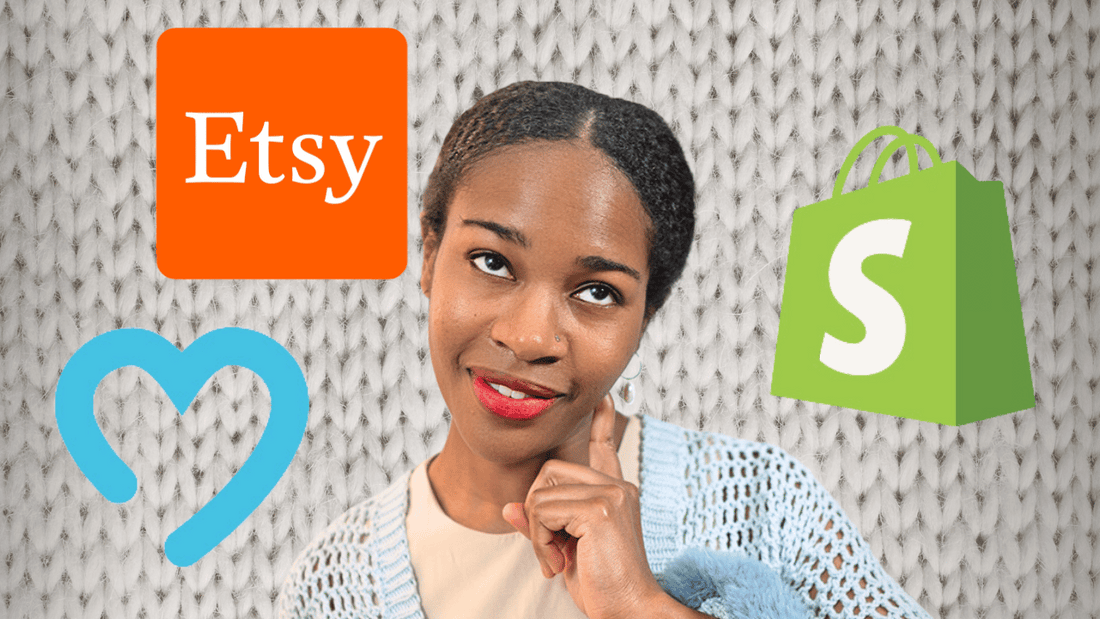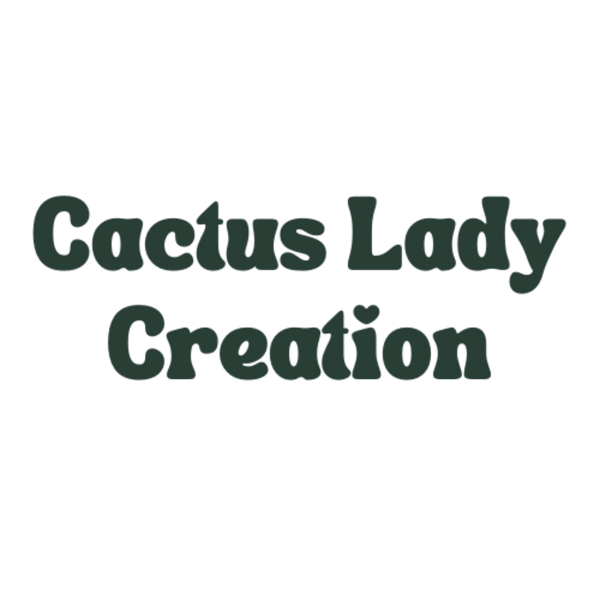
ETSY, SHOPIFY, OR GOIMAGINE | the BEST as a Handmade Business & Artist
If you're a handmade business owner or artist, you’ve probably wondered which platform is the best for selling your creations in 2025. With so many options available, it can be tough to decide where to set up shop. In this post, I’m breaking down three popular platforms—Etsy, Shopify, and Go Imagine—to help you figure out which one is the best fit for your business.
A little while ago, I made a video about Etsy and the frustrations that many artists and handmade business owners have with the platform. A lot of you shared your own experiences—what frustrates you, why Etsy still works for some of you, and your interest in exploring other options. Many of you also asked which platform I prefer, so in this post, I’m diving into the pros and cons of these three platforms.
I am going to be comparing 4 different key metrics of each platform to help you decide which one is best for you: Fees, Ease of Use, Traffic, and Seller Support.
Alright so first let’s talk about the Fees and Pricing of each platform. We’re going to discuss the listing fees, transaction fees, payment processing fees and monthly subscription costs
Fees:
Etsy
Listing Fees:
Cost: $.20USD per listing
Duration: Each listing remains active for four months or until the item sells, whichever comes first.
Transaction Fees:
Rate: 6.5% of the total order amount.
Includes: This fee applies to the combined total of the item price, shipping cost, and any additional charges like gift wrapping.
Payment Processing Fees:
Structure: A fixed fee plus a percentage of the total sale price.
Variation: The specific rate and fixed amount depend on the seller's country, and you can review the link here on Etsy's website for what each exact fee is for each country. For the U.S., where I currently am, this is 3% + .25 USD.
Calculation: These fees are deducted from the total sale amount, which includes the item price, shipping fees, and any applicable sales tax.
Monthly Subscription Costs:
Standard Account: No monthly subscription fee; you pay only the fees mentioned above.
Etsy Plus: However, there is an optional subscription priced at $10 USD per month, offering additional features like advanced shop customization, discounts on custom web addresses, and credits for listings and advertising.
Sales Tax:
Etsy does collect and remit sales tax for you, so I know that is why many sellers prefer to use it especially when getting started with selling online.
Shopify
There are no listing fees, instead there is a monthly subscription.
Basic Plan: $29 USD per month (billed annually) or $39 USD (billed monthly).
Shopify Plan: $79 USD per month (billed annually) or $105 (billed monthly).
Advanced Plan: $299 USD per month (billed annually) or $399 (billed monthly).
Each plan includes a range of features tailored to different business requirements, but if you are a solo entrepreneur the basic plan is perfect.
Transaction Fees: When using Shopify Payments, the platform's built-in payment processor, transaction fees vary by plan:
Basic Plan: 2.9% + 30¢ USD per online transaction.
Shopify Plan: 2.7% + 30¢ USD per online transaction.
Advanced Plan: 2.5% + 30¢ USD per online transaction.
If you opt to use a third-party payment provider instead of Shopify Payments, Shopify applies an additional fee:
Basic Plan: 2% per transaction.
Shopify Plan: 1% per transaction.
Advanced Plan: 0.5% per transaction.
These fees are in addition to any charges imposed by the third-party payment provider.
Payment Processing Fees: Payment processing fees are included in the transaction fees mentioned above when using Shopify Payments. For third-party payment providers, processing fees will depend on the provider's rates and are separate from Shopify's additional transaction fees.
Sales Tax: Shopify will collect sales tax for you but will not remit it, so you have to handle this yourself.
Go Imagine
Now for Go Imagine the membership fee and listing fee is bundled together:
Monthly Membership Plans: Go Imagine offers a straightforward membership model with different tiers:
Community Plan: There is a free option which includes 12 product listings.
Thrive Plan: $5 per month - Allows up to 200 product listings.
Mosaic Plan: $15 per month - Allows 1,000 product listings.
Transaction Fees: In addition to the monthly membership fee, GoImagine charges a transaction fee based on your chosen plan:
The Community Plan has a 6.5% transaction fee.
The Thrive Plan has a 5% transaction fee.
The Mosaic Plan has a 2% transaction fee.
This fee is applied to the total sale amount, including the product price and shipping costs.
Payment Processing Fees: GoImagine partners with Stripe for payment processing.
Stripe's standard fees are: 2.9% + $0.30 per transaction.
These fees are deducted from the total transaction amount and are separate from GoImagine's transaction fees.
Sales Tax: GoImagine automatically calculates, collects, and remits sales tax for orders shipped to states where marketplace facilitator laws apply, so it’s similar to Etsy in this way and is great if you prefer this! The sales tax amount is collected from the buyer at the time of purchase and remitted to the appropriate state authorities on behalf of the seller.
Ease Of Use:
Etsy
Etsy Is super beginner-friendly! You can set up a shop in minutes by creating an account, adding listings, and setting up payments. However, you're limited to Etsy’s structure, and there’s little room for branding, unless you purchase the Etsy plus membership which is $10 USD extra per month and allows for more customization including having a custom web address or domain - and it’s partnered with a hosting company called Hover for this, and you do have to purchase that domain with them as well.
Shopify
Shopify Requires a bit more effort but is still straightforward. You’ll need to choose a plan, pick a theme, customize your store, and set up payment options. It’s more involved than Etsy to get started but you have full control. You can also easily sync it up with Meta Ads- so Facebook and Instagram, TikTok Shop with TikTok and Google Ads with YouTube, as well as Pinterest Ads which is why I love it - it’s really easy to control your ads and ad campaigns. There are also a lot of apps in Shopify that you can easily integrate into website to build it out the way you like, such as the Email app which you can easily control your email campaigns as well.
GoImagine
Similar to Etsy in ease of setup. You sign up for a membership, create your shop, and list your products. However, since it’s a newer platform, there are fewer integrations and automation tools compared to Shopify.
Traffic:
Etsy
Etsy is a well-established marketplace with a substantial built-in audience. Etsy.com has about 400 million visitors each month according to Yaguara with 56.86% of the traffic coming from the U.S. and 9.25% traffic from the U.K.
Shopify
Unlike Etsy and GoImagine, Shopify operates differently. It provides a platform for individual sellers to create their own online stores, meaning traffic is directed to each seller's unique website rather than a centralized marketplace. Therefore, Shopify doesn't have a collective "built-in" audience; the traffic to your store depends on your marketing efforts.
GoImagine
GoImagine is a newer marketplace with a growing user base. Recent reports indicate that GoImagine receives around 245,000 monthly visit. It's good to note that a portion of this traffic may come from sellers managing their listings.
Seller Support:
Etsy
Support Options: Etsy offers email and chat support, plus a help center with FAQs and community forums. Phone support is available, but only through callback requests.
Response Time: Varies. Some sellers get quick help, while others report long wait times, especially when dealing with disputes.
Seller Protections: Etsy’s Purchase Protection Program covers certain orders, but sellers have limited control over disputes. Etsy often sides with buyers in refund or fraud cases.
Shopify
Support Options: Shopify provides 24/7 customer support via chat, email, and phone, plus an extensive knowledge base.
Response Time: Generally fast, with priority support available on higher-tier plans.
Seller Protections: Since you run your own store, Shopify doesn’t interfere with customer disputes—you set your own policies. Chargebacks are handled through your payment processor.
Policy Enforcement: Shopify rarely shuts down stores unless there’s a clear violation of terms (like selling prohibited items). You have full control over your store.
GoImagine
Support Options: Email support with a real team (not bots), plus a seller-focused Facebook group for troubleshooting and community help.
Response Time: Typically responsive, but not 24/7 like Shopify.
Seller Protections: Still growing, but GoImagine has a seller-first approach, meaning they actively work to support handmade businesses.
Policy Enforcement: More flexible than Etsy, but still enforces marketplace policies to maintain quality.
If customer support is a priority, Shopify is the strongest. If you want a marketplace with seller-friendly policies, GoImagine is worth considering. Etsy is hit-or-miss—great if everything is running smoothly, but frustrating if issues arise.
Alright, so there you have it—Etsy, Shopify, and Go Imagine each come with their own pros and cons for artists and handmade business owners.
- Etsy offers an easy way to tap into an existing audience, but you'll have to navigate its fees, competition, and algorithm.
- Shopify gives you full control over your branding and business, but you’ll need to put in the work to drive traffic.
- Go Imagine is a newer, mission-driven alternative, though it’s still growing in audience size.
For full transparency, I personally use Shopify because I like having complete control over my business and tracking my traffic. I’ve tried Etsy a few times but didn’t put much effort into navigating the algorithm—and to be honest, I wasn’t a fan of its ethics, which I dive into more in my Etsy video. If you haven’t watched it yet, definitely check it out after this one!
That said, I’ll be reopening my Etsy shop for research purposes to compare it with my website and Go Imagine. I’ll be documenting the entire process, so if you’re curious to see how it plays out, make sure to subscribe and hit the bell to stay updated!
At the end of the day, the best platform depends on your business goals—are you looking for the easiest setup, full creative control, or a marketplace with a mission?
And if you’re serious about making money as an artist online, grab my free Guide to Launching Your Online Art Business!
Don't forget to check out the Artrepreneur playlist, where I discuss different topics on all things handmade business and artist related.
If you are trying to figure out what handmade products to get started with creating and want to see some data behind what might be lucrative to make, check out the 10 Handmade Products to Make and SELL in 2025 article next!
